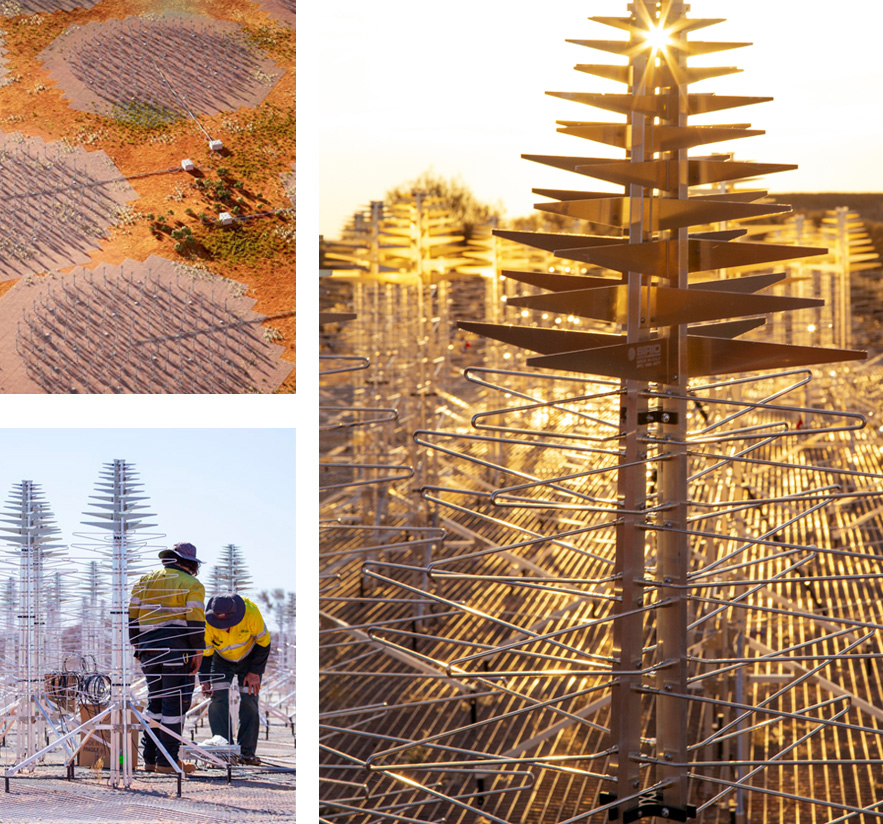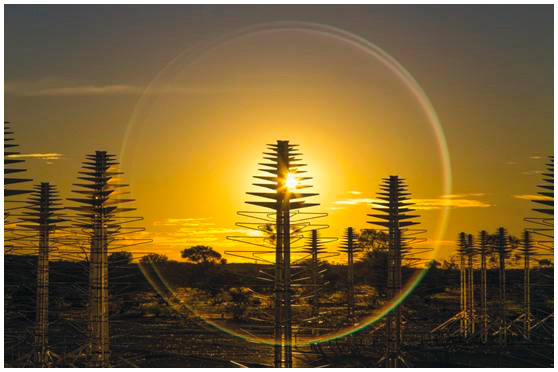The largest radio telescope ever built
Since the end of 2017, we have embarked on a highly satisfying international adventure..
We were involved through INAF (the National Institute for Astrophysics) in creating prototypes for the international SKA project.
With a considerable commitment of resources dedicated to developing the SKALA antenna and testing the materials used, we managed to bring the construction of the antennas to Italy.
Only in 2022, after almost five years of work, we won the tender for the construction of the first 78.520 low-frequency antennas (50-350MHz).










